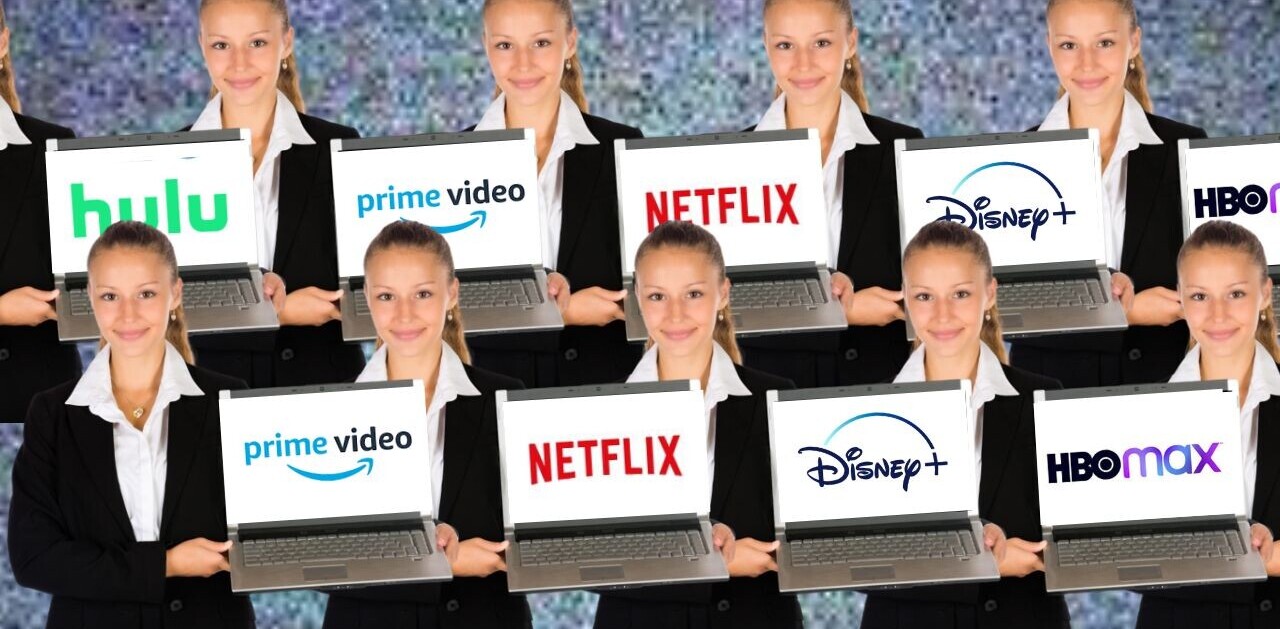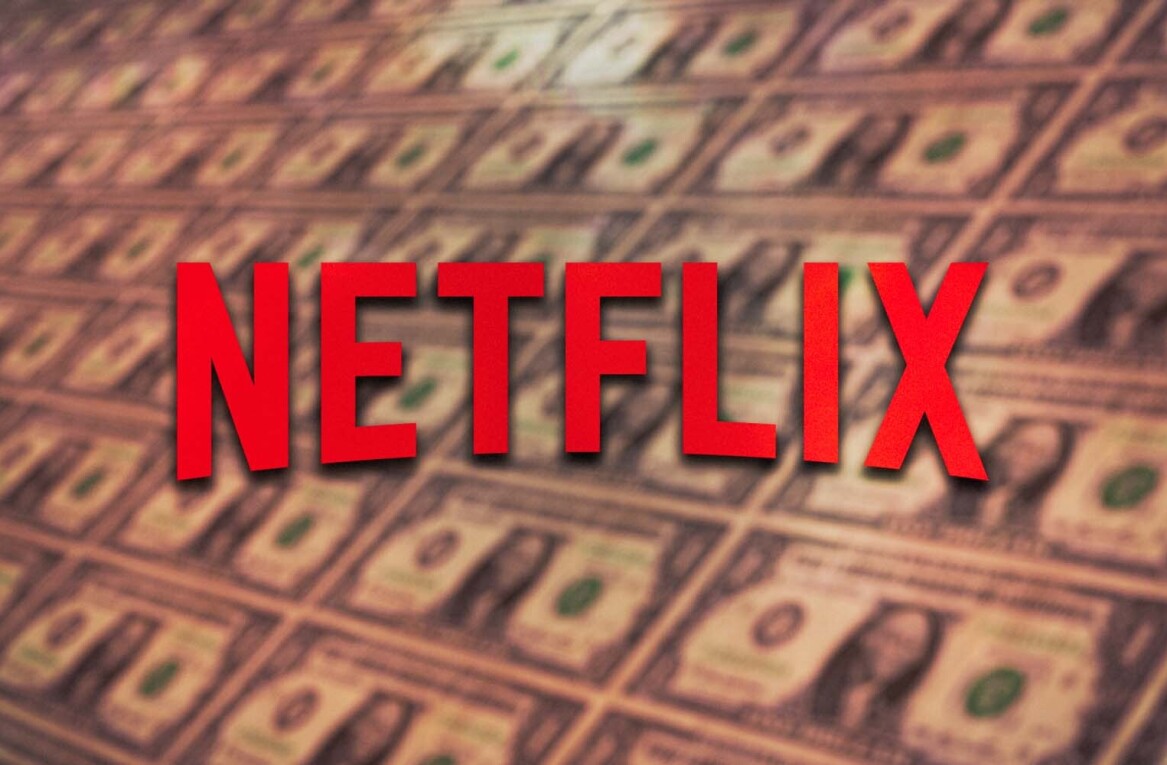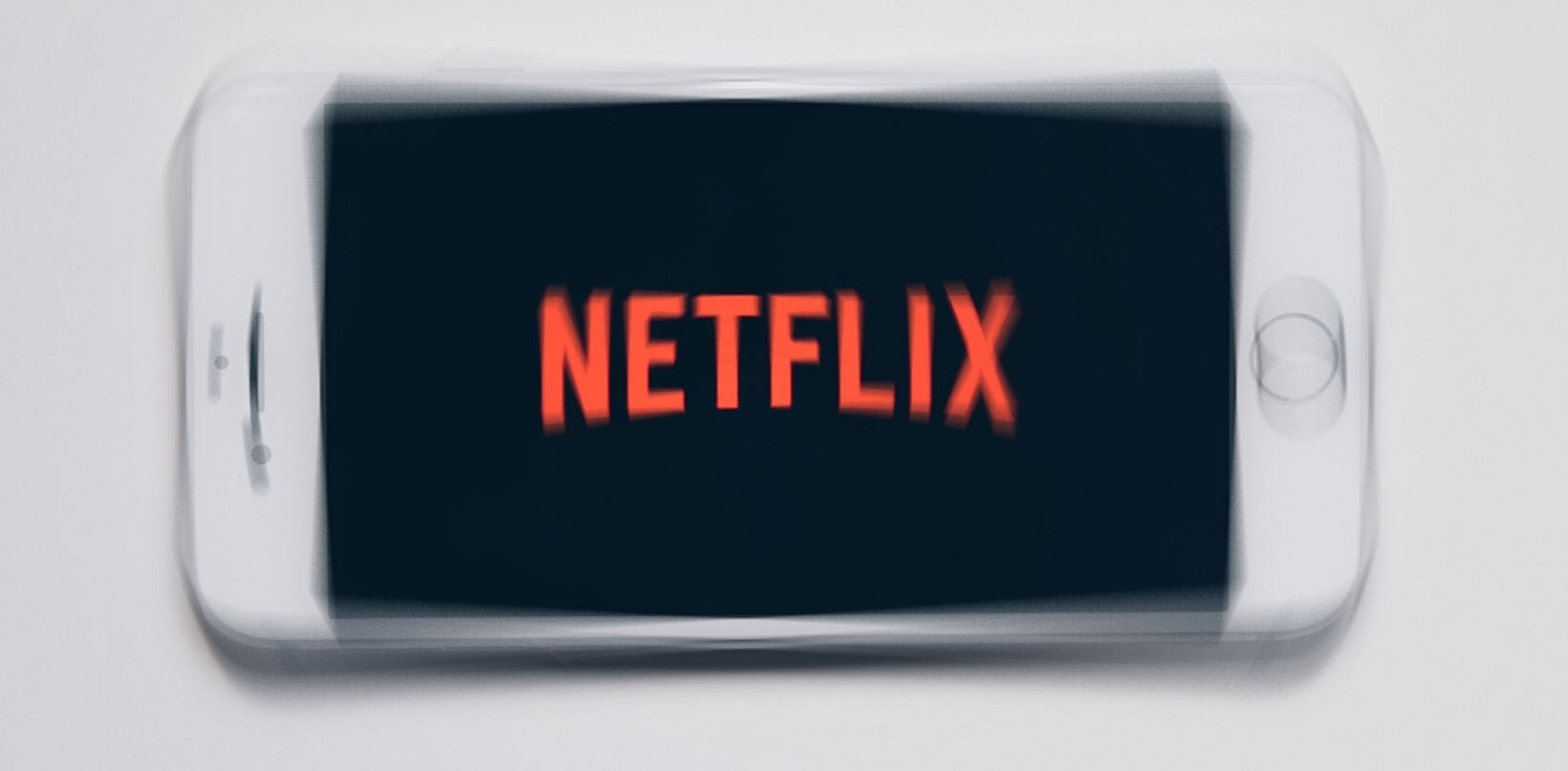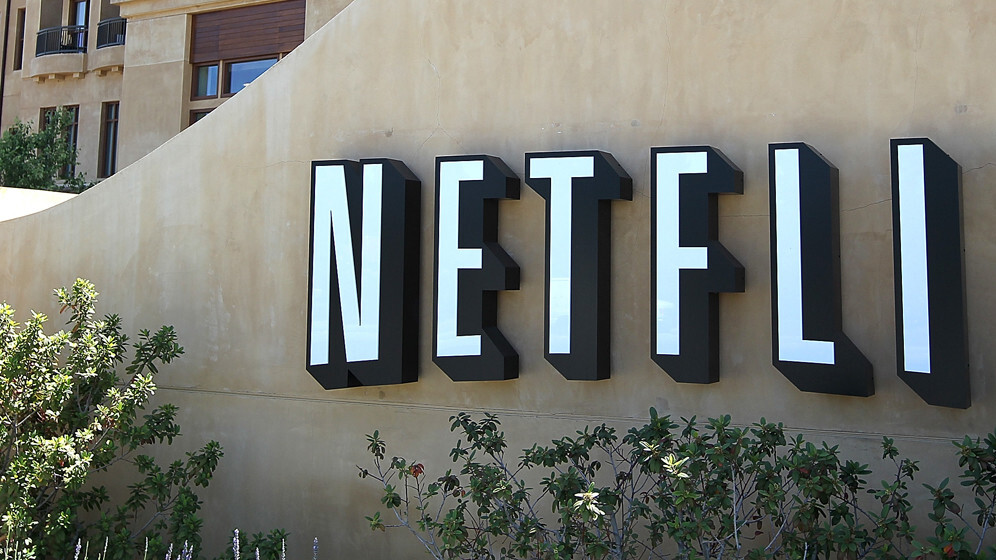
Movie and TV streaming service Netflix has released a new dataset for last month detailing exactly which Internet Service Providers (ISP) are delivering the best video streams in the United States.
Google Fiber comes out on top, with an average speed of 2.55 megabits per second (Mbps) for streaming Netflix content. That’s not surprising given the speed of the fiber-optic network that Google deployed earlier this year in the relatively small area of Kansas City.
Meanwhile, Verizon’s FiOS service, which bundles internet access with a telephone and television package came in second, with Comcast sitting just behind it in third place.
It’s the first time that Netflix has published this kind of data, although the streaming company says it will now start issuing the rankings on a monthly basis. “Our 30 million members view over 1 billion hours of Netflix per month, so we have very reliable data for consumers to compare ISPs in terms of real world performance,” Ken Florance, Vice President of Content Delivery at Netflix said.
The full breakdown can be seen below:
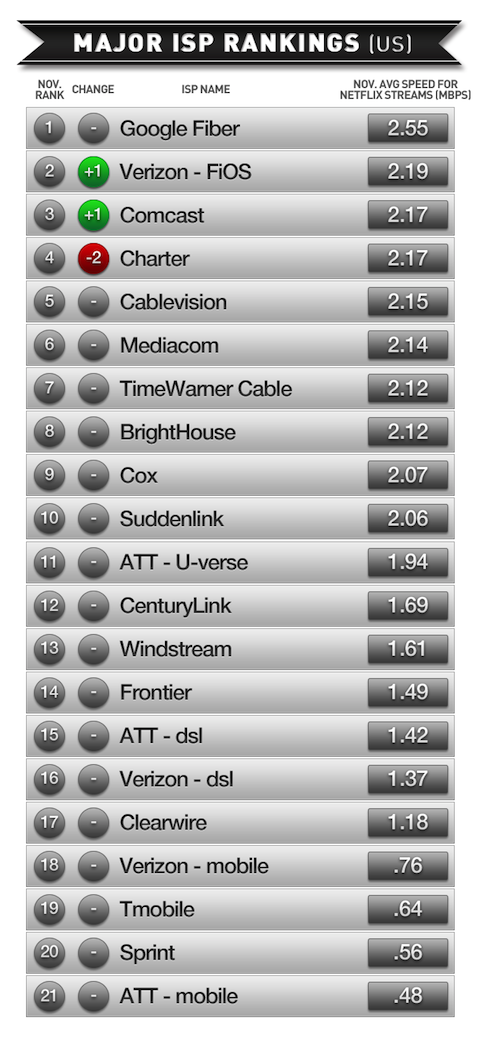
What might surprise you is how these figures compare with the recommended internet speeds offered by Netflix. According to one of the company’s support webpages, users should have a connection of at least 0.5 Mbps just to access the service, although 1.5 Mbps is recommended.
To actually stream TV shows or movies on Netflix, however, the company suggests a connection of 3.0 Mbps for DVD quality, or 5.0 Mbps for anything in high definition. By looking at these benchmarks, it seems that all of the major ISPs, including Google Fiber, simply aren’t up to the job.
“The average performance is well below the peak performance due to a variety of factors including home Wi-Fi, a variety of devices, and a variety of encodes,” Florance added. “The relative ranking, however, should be an accurate indicator of relative bandwidth typically experienced across all users, homes, and applications.”
There might be a time when all TV content is streamed over the Internet, rather than through a traditional cable company in the United States. However, unless the speeds offered by ISPs vastly improve, the model simply won’t be viable for many normal families that already have a subscription for both cable TV and an Internet service.
Image Credit: Justin Sullivan/Getty Images
Get the TNW newsletter
Get the most important tech news in your inbox each week.
